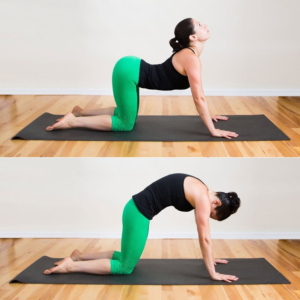Introduction
Ujjayi, often referred to as the victorious breath, is a vital component in the world of yoga and mindfulness. Originating from the Sanskrit word “Ujji,” meaning to conquer, this ancient breath technique has been practiced for centuries, promoting inner calm and focus. Whether you’re a seasoned yoga practitioner or someone new to the world of mindfulness, Ujjayi has something to offer. It’s not just about breathing but about connecting with oneself at a deeper level. Have you ever tried to enhance your well-being with a simple breathing exercise? If not, the journey of Ujjayi might be the perfect path to explore, promising a profound connection between mind and body.
The Origin and Meaning of Ujjayi
The practice of Ujjayi, a term derived from the Sanskrit words “Ud” (expanding) and “Jaya” (victory), has deep roots in ancient Indian tradition. Often translated as “victorious breath,” Ujjayi is a significant breath technique widely used in various yoga practices, connecting it to the very essence of life itself. Historically, this breathing method was taught to warriors to instill a sense of victory and confidence. Its application in yoga practice has evolved over the millennia, becoming a vital tool for synchronization of breath and movement.
This unique connection has transformed Ujjayi into a method that not only facilitates physical well-being but also emotional balance and spiritual growth. As you breathe in through your nostrils and gently constrict the back of your throat, creating a gentle hissing sound, Ujjayi brings a calming effect to the mind. In the contemporary world, where stress and disconnection often prevail, understanding and practicing Ujjayi can serve as a bridge to mindfulness and inner peace. It’s more than a mere technique; it’s a philosophy and way of life that empowers individuals to connect with their inner selves, echoing the wisdom of ancient sages and yoga masters.
The Technique of Ujjayi Breathing
Practicing Ujjayi Breathing is an engaging experience that requires mindfulness and precision. Here’s a step-by-step guide to help you master this ancient breath technique:
- Find a Comfortable Position: Whether seated or standing, ensure that your spine is straight and shoulders relaxed. Your body should be poised, ready to engage in a deeper connection with the breath.
- Inhale Through the Nostrils: Begin by taking a deep, slow inhalation through both nostrils. Focus on filling your lungs completely, allowing the breath to expand your chest.
- Constrict the Back of the Throat: As you inhale, slightly constrict the back of your throat, creating a gentle hissing or ocean-like sound. This sound is a hallmark of Ujjayi and helps in maintaining focus and rhythm.
- Exhale with Control: Exhale slowly through the nostrils, maintaining the constriction in the throat. The exhalation should be controlled and steady, mirroring the inhalation in length and sound.
- Synchronize with Movement: If used in a yoga practice, synchronize the breath with your movements. Inhale as you extend, and exhale as you fold or contract. This synchronization brings harmony to the practice and increases awareness.
- Maintain Focus: Your attention should be on the sound and sensation of the breath. The experience of Ujjayi transcends mere physical exercise and enters a meditative state.
- Practice Regularly: Like any skill, mastering Ujjayi requires practice and patience. Regular engagement helps in reaping its full benefits.
Benefits of Practicing Ujjayi
The benefits of practicing Ujjayi are extensive and reach beyond the realms of mere physical well-being. Here’s an in-depth exploration of the wonders this breath technique can bring to your life:
- Improves Concentration: By focusing on the sound and rhythm of the breath, Ujjayi helps to sharpen concentration and enhances mindfulness, bridging the gap between mind and body.
- Promotes Calmness: The gentle hissing sound produced during Ujjayi has a calming effect on the mind, aiding in stress reduction. It’s a therapeutic practice that many turn to for emotional tranquility.
- Enhances Lung Capacity: Regular practice of this breathing method can strengthen the diaphragm and increase lung capacity. It’s particularly beneficial for those engaged in physical activities that require controlled breathing.
- Regulates Body Temperature: By controlling the flow of breath, Ujjayi can help regulate body temperature, keeping the body warm during cold practices and cool during intense sessions.
- Strengthens Inner Connection: Ujjayi isn’t just a breath control method; it’s a way to connect with your inner self. It offers a spiritual pathway that aligns thoughts, emotions, and physical sensations.
- Supports Healing: In some cases, this practice has been shown to support healing from surgeries or injuries. The focused breathing helps increase oxygen supply to tissues, promoting faster recovery.
- Aids in Sleep and Relaxation: Through its calming effects, Ujjayi can be a remedy for insomnia or anxiety. Practicing it before bedtime can lead to a more relaxed state and restful sleep.
- Enhances Yoga Practice: For yoga enthusiasts, Ujjayi acts as a catalyst, synchronizing breath and movement, making the yoga experience more profound and integrated.
Common Misconceptions about Ujjayi
Despite its growing popularity, there are several common misconceptions about Ujjayi that often lead to confusion or misunderstanding:
- Only for Advanced Practitioners: Some believe that Ujjayi is solely for advanced yoga practitioners. However, this breath technique is accessible to all levels, from beginners to seasoned yogis.
- Difficult to Master: The perception that Ujjayi is complex and hard to master is prevalent. In truth, with guidance and regular practice, it can be incorporated into daily routines with ease.
- Only for Yoga Practice: Many associate Ujjayi strictly with yoga practice. While it enhances yoga, it’s also a stand-alone technique that can be practiced for relaxation, focus, or meditation outside of a yoga setting.
- Potential Health Risks: Some fear that the constriction of the throat might cause harm or discomfort. When practiced correctly, Ujjayi is safe and can be beneficial to respiratory health.
- Instant Results Expected: A misconception that immediate transformation will occur can lead to impatience. Like any skill, Ujjayi takes time and dedication to experience its full range of benefits.
Conclusion
The journey through Ujjayi, the victorious breath, unfolds a path that is as rich in history as it is in benefits. From its origins in ancient Indian tradition to its contemporary applications in yoga practice and mindfulness, Ujjayi stands as a testament to the power of the breath. It’s not merely a breath technique but a holistic approach to well-being that transcends physical boundaries, connecting mind, body, and soul. Whether you are looking to enhance concentration, find inner peace, or explore a deeper connection within your yoga routine, Ujjayi offers a gateway. Embracing this practice requires patience, dedication, and an open heart. It’s a journey worth exploring, promising transformation, and a renewed sense of self. Try it today and witness the serene victory that resides within your breath.



